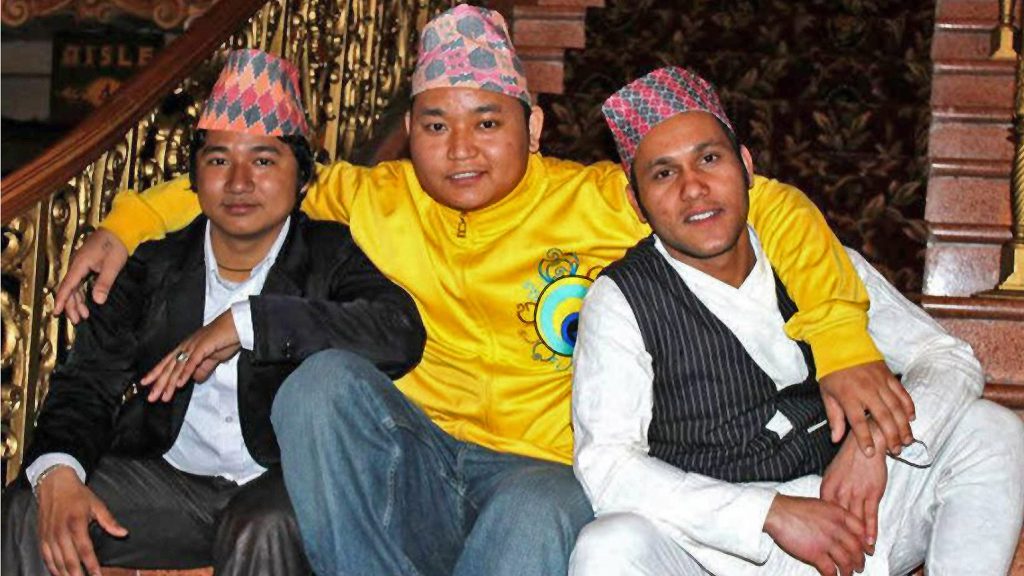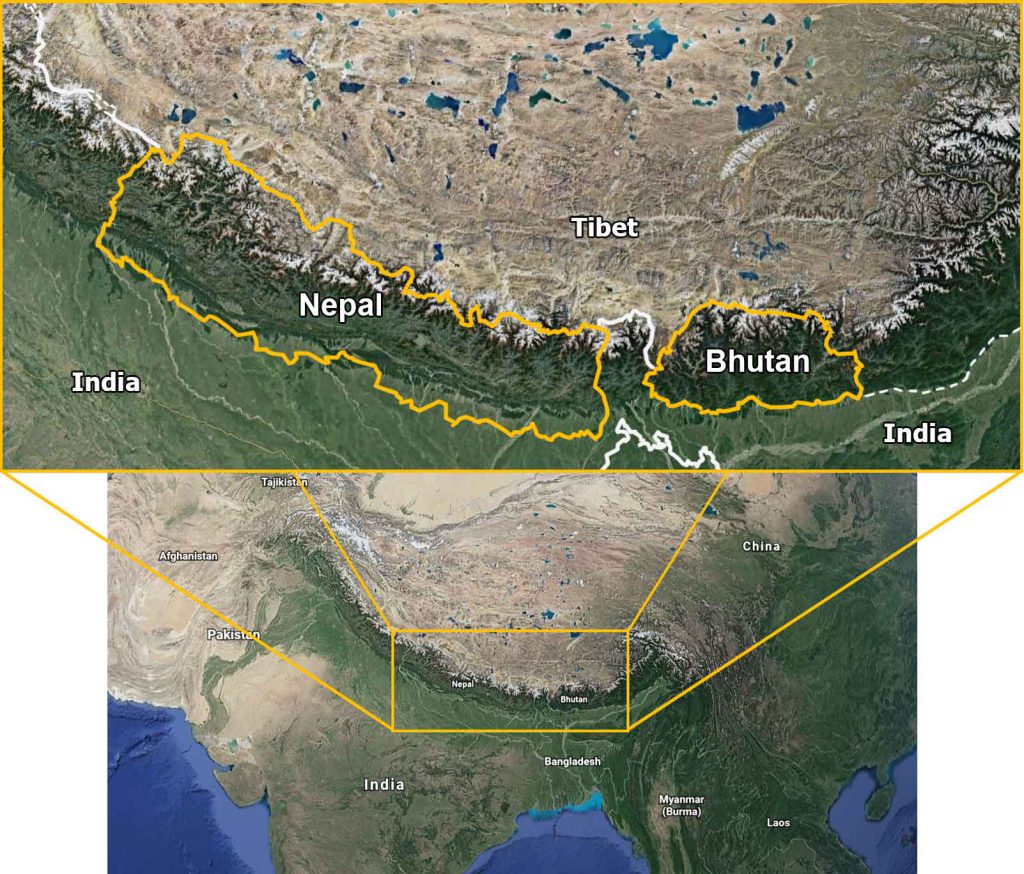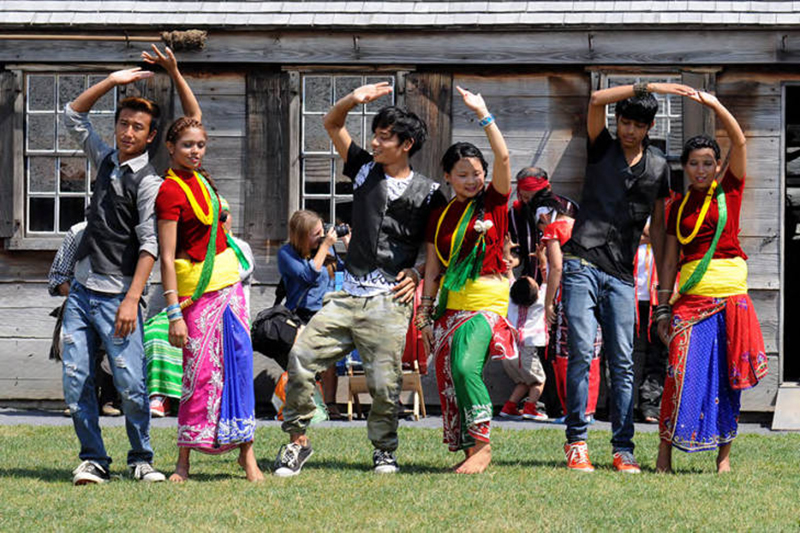How Names Tell Stories of Loss and Resilience

When Shyam “San” Rai was 8 years old, he and his family were forced out of Bhutan by the government and relocated to a refugee camp in the nearby nation of Nepal. Food was scarce, he remembers, and survival was hard.
Rai lived in the refugee camp for 22 years before he moved to the United States in 2011. He settled in Utica, New York, dubbed “The Town That Loves Refugees” by the magazine of the office of the United Nations High Commissioner for Refugees.
There, he joined many refugees—including others who, like himself, hailed from the countries of Nepal and Bhutan. These two South Asian nations, bordering Tibet, share a population of refugees with mixed ancestry—linked to both Nepal and Bhutan—that has experienced statelessness and discrimination within both countries.
“Some people say, ‘We are Bhutanese because we were born in Bhutan and our nationality is Bhutanese,’” says Rai. “Other people say, ‘Our forefathers are from Nepal, and we speak Nepali, we eat Nepali food, and we celebrate Nepali culture.’”
Rai’s approach to self-naming is common in the Bhutanese Nepali communities of the United States. “It’s flexible. It’s a ‘both-and’ as opposed to an ‘either-or’ identity,” says Andrew Nelson of the University of North Texas, Denton. Nelson and fellow cultural anthropologist Kathryn Stam of the State University of New York Polytechnic Institute, Utica, are studying the roots of this flexibility.
Names often tell a story. And Stam and Nelson have found the names used by the Bhutanese Nepali community are no exception. Some names encode historical migrations, as is the case for the Bhutanese Nepali community. In addition, names can reflect “othering” in which dominant powers seek to differentiate refugees from the rest of a population in a region or nation. Resettlement and citizenship in new lands, meanwhile, present new opportunities for refugees to name themselves.
Bhutanese Nepali naming, then, offers a window into a refugee experience and the community’s century-long narrative of resilience. Today, as vulnerable populations migrate across the globe in search of better lives, that narrative is a timely reminder of the complexity of defining nationality, particularly for groups who have experienced statelessness.
Migration is central to the Bhutanese Nepali refugees’ story. Until 1992, Rai’s parents were farmers in Bhutan. They grew rice and vegetables, such as corn and zucchini, to sell at the market. But his forefathers were originally from Nepal, and Rai grew up speaking Nepali.
In fact, many families migrated from feudalist Nepal to Bhutan in the late 19th and early 20th centuries as farmers. There, they were known as Lhotshampas, or “Southerners,” in Bhutan’s national language, Dzongkha, because they lived in southern Bhutan.
But the Bhutanese government, from the late 1970s until the 1990s, made it more difficult for people with Nepali ancestry to remain. Thousands of people relocated to refugee camps in Nepal. Many of these refugees embraced aspects of their ancestral Nepali culture. But they were not fully welcomed in Nepal, despite their roots. Many could not own land or become Nepali citizens. As refugees, they became Bhutanese or “Bhutani,” in the Nepali language, Nelson says.
“Being forced into highly regulated refugee camps in Nepal forged a collective identity which was often in resistance to the larger political structure,” Nelson says. That spirit would contribute to the refugees’ flexibility in naming as they resettled once again.
Since 2007, more than 100,000 Bhutanese refugees moved from Nepal to other countries, including the United States, Canada, and Australia. A new chapter of migration unfolded in U.S. cities like Utica and Fort Worth as these refugees studied, got jobs, and shared their culture with the wider community.
Rai, for example, took English classes at the refugee center in Utica. He initially worked at a nearby casino before taking his current job at Chobani, the yogurt company, where he cleans production equipment.
Rai also joined a folk band in Utica, playing the madal hand drum and sharing traditional Nepali songs he learned in the refugee camps. For several years, the band played at schools, museums, and cultural festivals sprinkled throughout the hillsides of central New York. Rai and Stam, who managed the group, became friends.
Stam and Nelson have been studying Bhutanese Nepali refugee communities in New York and Texas, respectively, for years. Nelson has interviewed and observed more than 40 families in Fort Worth’s community since 2015.
In his writing, Nelson uses the term Nepali Bhutanese rather than Bhutanese Nepali—though both anthropologists say either order is accurate. (Nelson adds, “This very question is how our work on this topic started!”)
Stam, meanwhile, is the president of the board of the Midtown Utica Community Center, which serves refugees in the area. She has documented several aspects of the resettlement experience in studies and for the Refugees Starting Over project.
“Bhutanese Nepali refugees have this really complicated relationship with identity,” Stam says. She adds that their flexible identity is unique among the many refugee communities living in Utica.
The Karen, for example, may have relocated from Burma, but they dislike being called “Burmese,” in part because it connects them to that nation’s military, which oppressed their ethnic group. Refugees from Somalia, meanwhile, hold rigid rules about the use of names such as Bantu and Kizigua, which reference ethnic groups and their nomadic traditions back in Africa. And they may find it offensive to be called “Somali” because of their history of conflict with this group.
“One generalization that we can make is that the practice of naming or any sort of practice of readjustment when moving into a new society is a political statement of sorts,” Nelson says. “It’s a way of negotiating new structures through strategies.” For the Bhutanese Nepali, these strategies have been developed over multiple migrations.
Names tell a story. The names used by the Bhutanese Nepali community are no exception.
Naming can be strategic, in recognition of a particular audience and its expectations. People may say that they are Nepali because their classmates or co-workers have more familiarity with Nepal than Bhutan, for example.
Sometimes the choice in name reflects specific activities or circumstances. People in these communities may call themselves Nepali when they eat food like dal bhat (a traditional rice and lentil meal) and wear traditional Nepali clothes, Stam notes.
And Stam has noticed a generational fault line in the refugee communities from Nepal and Bhutan. Older refugees born in Bhutan are more likely to prefer identifying as Bhutanese, and they are more likely to talk about the loss of their Bhutanese home and life than younger refugees. They may also, in her observations, be less comfortable with flexible labels than younger refugees.
Rai, 34, says his identity lends itself to very long conversations. Initially, he may tell someone that he is from his birthplace, Bhutan, but then he will explain that he’s from Nepal if that person is eager to know more about his home.
And Rai recognizes other generational shifts underway. He has a 2-year-old son and a newborn daughter; he wants his children to embrace their American roots while still honoring their Nepali culture.
“They belong to the United States, so I think they’re going to say, ‘I’m from the United States,’” says Rai. He hopes his children will speak English and Nepali, and he intends to tell them the story of his early life in Bhutan. “I don’t want them to forget their culture,” he says, echoing a sentiment held by refugees and migrants the world over.


































